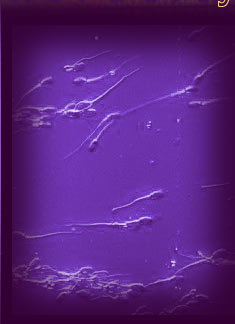












|

Antonie van Leeuwenhoek's microscopes, which he crafted by hand using secret methods, had powers of magnification ranging from 50 to 300 times. His microscopes allowed him to see sperm for the first time in history.
|
 |

1632-1723 Antonie van Leeuwenhoek
In 1677, just twenty years after William Harvey's death, Dutch scientist Antonie van Leeuwenhoek created a microscope powerful enough to magnify the sperm found in semen. Because Harvey could not observe with the naked eye any evidence of hereditary material in semen, he became skeptical that semen made a genetic contribution to a fetus. Van Leeuwenhoek's finding, however, spawned the idea that cellular interactions generate all living things. With his microscope, Leeuwenhoek could plainly observe these interactions taking place. His discovery made him famous worldwide and debunked the then popular notion of spontaneous generation. Until Leeuwenhoek, eels, for example, were believed to spontaneously arise from dew. Leeuwenhoek investigated the generation of eels and proved that they originated, like the other animals he studied, from cellular interactions between a male and a female of the kind.
|
 |